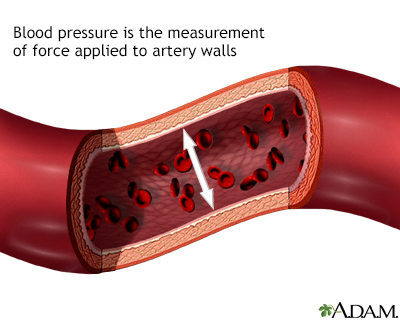| Step 1: What is blood pressure? |
Every time your heart beats, it pushes blood out to your entire body. The blood moves through blood vessels called arteries. The term blood pressure refers to how hard the blood is pressing against the walls of your arteries.

When your heart contracts, blood is forced out of the heart, and the pressure increases. When your heart relaxes, the pressure decreases.
A blood pressure monitor allows you to see the pressure at both points. The higher number is called the systolic pressure, and the lower number is the diastolic pressure. For example, a normal blood pressure is "115 over 70":
115 systolic pressure (heart contracting)/70 diastolic pressure (heart relaxing)
What is high blood pressure
High blood pressure, or "hypertension," often has no obvious cause, although many factors can contribute. When you have high blood pressure, the pressure in the arteries that transport blood is too high. High blood pressure puts an additional strain on blood vessels throughout your body and increases the workload on the heart. This chronic elevation in blood pressure can produce damage in other organs of the body.
 |
What should my numbers be?
The chart below shows how blood pressure is classified in adults at least 18 years old. Ideally, you want your resting blood pressure reading to be lower than "120 over 80."
| Systolic | Diastolic | |
| Normal | Less than 120 | Less than 80 |
| Pre-High blood pressure | 120 - 139 | 80 - 89 |
| High Blood Pressure - Stage 1 | 140 - 159 | 90 - 99 |
| High Blood Pressure - Stage 2 | 160 or over | 100 or over |
It's possible for only ONE of the numbers to be high (the systolic or diastolic). This condition is still considered hypertension, or high blood pressure. It is particularly important to keep an eye on a high systolic number.
 |
|
|
Review Date:
6/8/2011 Reviewed By: Steven Kang, MD, Division of Cardiac Pacing and Electrophysiology, East Bay Arrhythmia, Cardiovascular Consultants Medical Group, Oakland, CA. Review provided by VeriMed Healthcare Network. Also reviewed by David Zieve, MD, MHA, Medical Director, A.D.A.M., Inc. |
